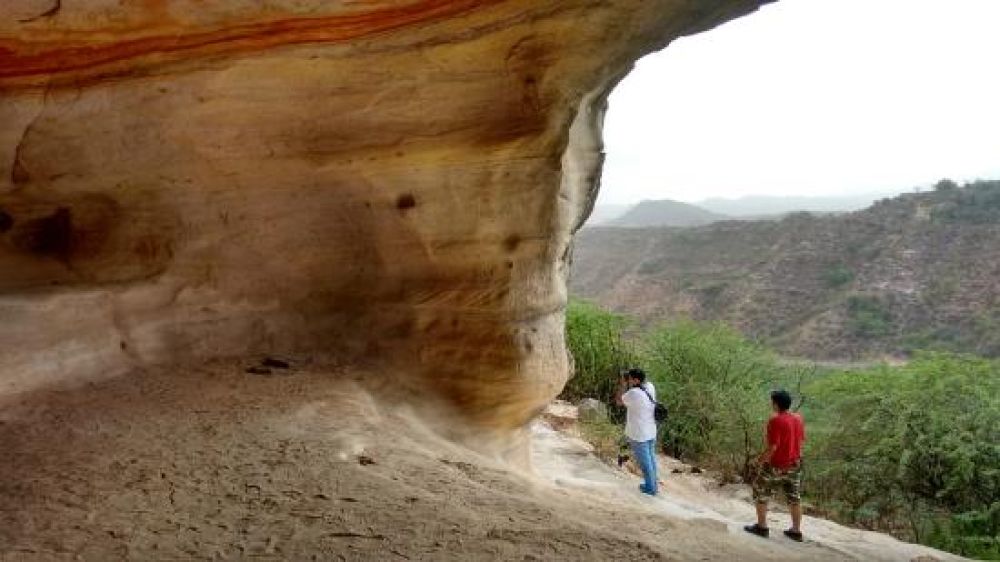

The Tapkeshwari Temple, located near Bhuj in the Kutch region of Gujarat, India, is an ancient and revered Hindu shrine dedicated to Goddess Tapkeshwari (form of Goddess Kali). The temple is nestled among limestone caves on a hill, offering not only a spiritual retreat but also a natural and historical allure to its visitors.
The history of Tapkeshwari Temple is intertwined with the cultural fabric of Gujarat. It is believed to be several centuries old, with the exact origins being somewhat obscured by time. The temple's unique cave setting indicates that it may have been a site for ascetics and monks who practiced severe penance and meditation. As a testament to the devotion to Goddess Tapkeshwari, the temple has endured through various historical chapters and has been a pilgrimage destination for the devout for generations.
Tourism at the Tapkeshwari Temple has evolved gradually. Initially known only among the locals and nearby inhabitants, the site has gained wider recognition over time due to the efforts of the tourism department and the interest of pilgrims and history enthusiasts. The temple has been part of the Kutch tourism circuit, which gained a significant boost post the rehabilitation and reconstruction efforts after the devastating earthquake of 2001 that struck the region.
Visitors can explore the caves and the beautiful rocky landscape surrounding the temple. The serene environment of the Tapkeshwari Temple offers a contrast to the bustling life of Bhuj, making it a perfect spot for solace seekers. Being close to Bhuj, the temple is accessible and provides the faithful and tourists an opportunity to witness the daily rituals and special festivities that are held with great fervor, especially during Navratri.
With the increase in heritage and spiritual tourism, Tapkeshwari Temple has seen a surge in visitors interested in experiencing the tranquility and heritage significance of the site. In recent years, Gujarat tourism has focused on promoting lesser-known sites, and Tapkeshwari Temple is one of the gems that is being highlighted. The advent of eco-tourism and sustainable travel practices also contribute to the conservation of such historical sites while promoting tourism.
Visitor Amenities have been developed over time to accommodate tourists, including better road connectivity, signage, basic facilities such as clean water and restrooms, and local guides. Additionally, annual cultural events and local fairs are now being organized to enhance the tourism experience.
In conclusion, the Tapkeshwari Temple represents a blend of spirituality, history, and natural beauty, making it an intriguing destination for those exploring the depths of India's rich heritage. As tourism continues to evolve, it is expected that this temple will maintain its sacred allure while adapting to the needs of modern travelers.